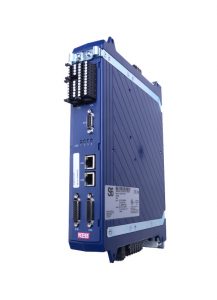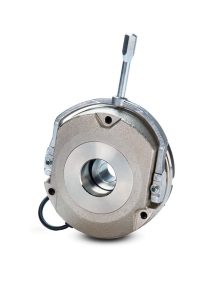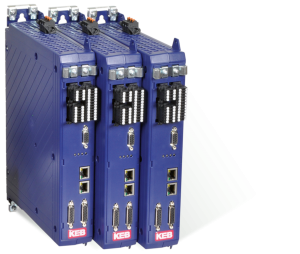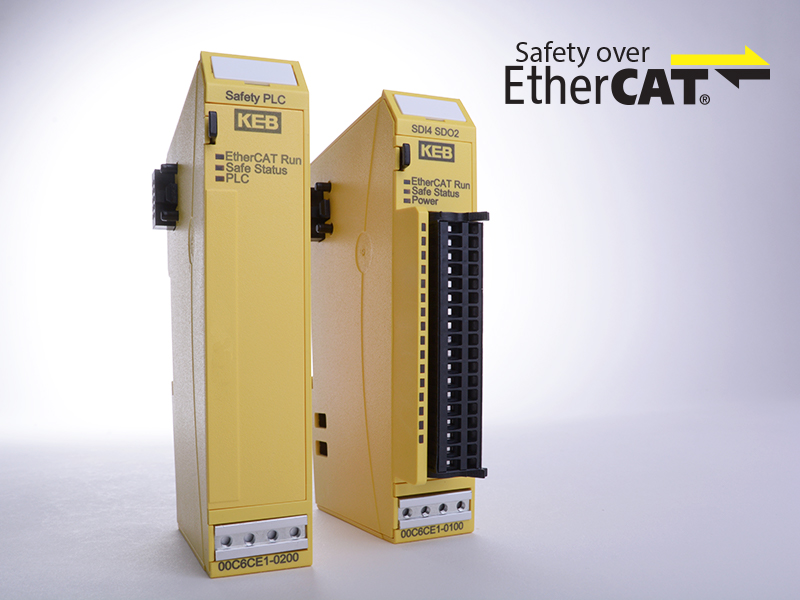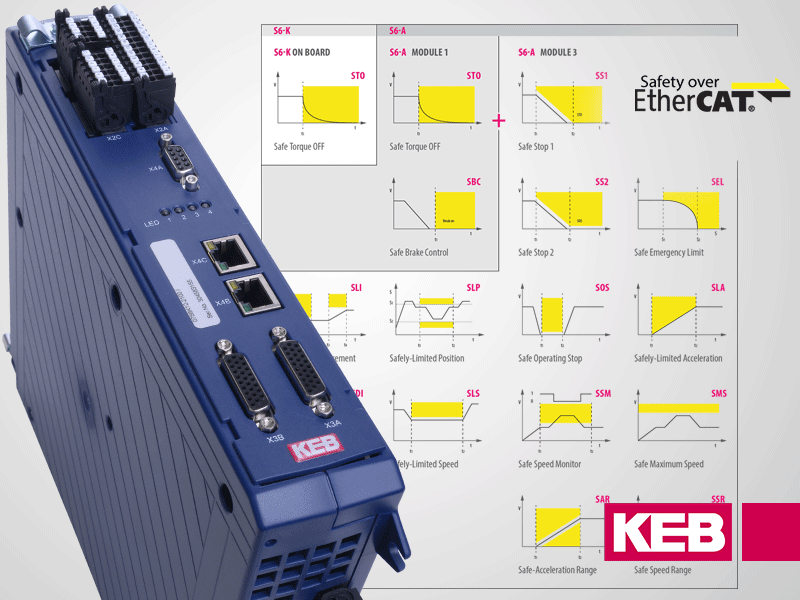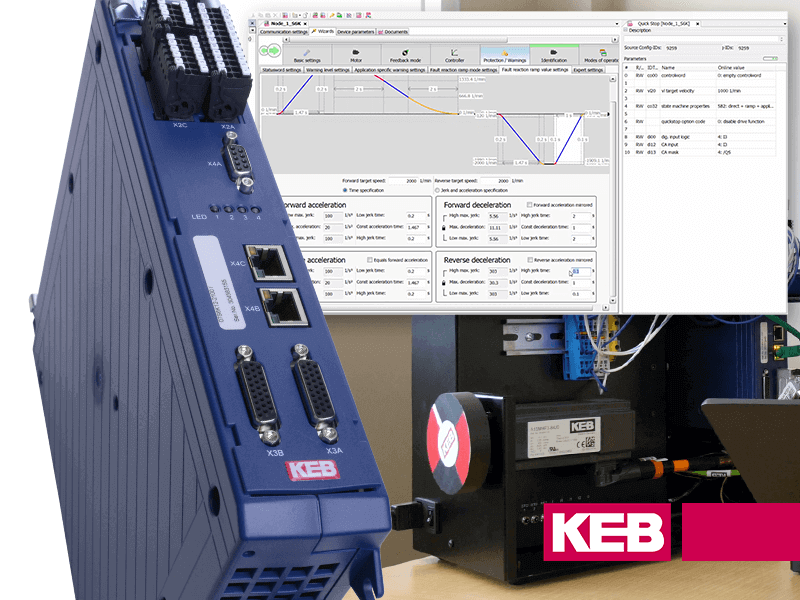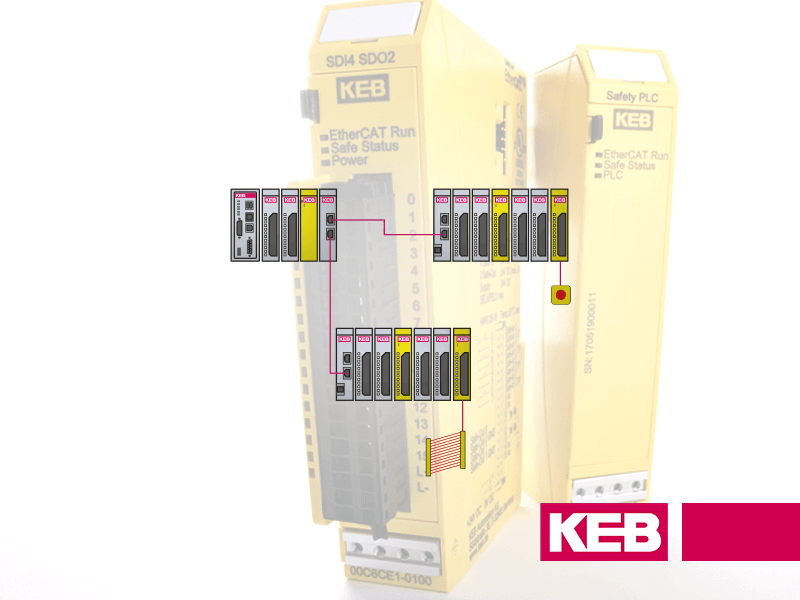Safe Torque Off and Safe Brake Control in the S6-A Servo Drive
KEB has a wide array of functional safety products, making it an industry leader in safety for motion control applications. One of these products is the S6 Servo Drive. This post will go into detail on Module 1 of the more flexible S6-A control version.
S6-A Module 1
The S6-A is the ideal fit for applications with more robust communication and safety requirements. Module 1 of the S6-A comes standard with Safe Torque Off (STO) and Safe Brake Control (SBC). These two safety functions allow for the safe control of both the motor shaft and brake. These two functions are rated to SIL3 for the IEC 61508 standard and to Performance Level e according to the ISO 13849 standard. Additionally, these functions have been certified by TÜV Rheinland in a 3rd party safety audit.
Safe Torque Off
Safe Torque Off (STO) is an integrated safety function that prevents the drive from applying torque to the motor shaft and can be used for a category 0 stop according to EN 60204-1.
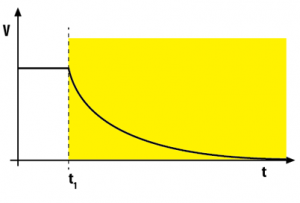
How does STO work?
The S6 drive has two independent 24V STO inputs. Both of these inputs are required in order for the drive to apply torque to the motor shaft. If either of the inputs drop during operation, the drive goes into stop category 0. This is an uncontrolled stop, where the drive ceases output to the motor and the motor is allowed to coast to a stop.
The two inputs each control 3 of the 6 output IGBTs and this redundancy reduces the common-mode error. The probability both inputs fail is very low, 2.3×10-7 according to the IEC 61508 standard. In this rare case, a DC voltage (non-rotating) will be applied to the motor. This may cause the motor to jump to the next pole pair. The rotation angle of this jump can be calculated based on the number of pole pairs and gear ratio. During the safety evaluation, this rotational jerk must be considered. However, based on the low probability, the risk is typically acceptable.
In addition to the safety functionality from the redundant safety inputs, the STO inputs are designed so that safety switchgear units with test pulses can be used. These units use Output Signal Switching Device (OSSD) signals to send 24V offset pulsed signals – like a heartbeat. These OSSD signals allow the drive to detect if the signal wires are miswired, damaged or shorted.
What are the benefits of STO?
STO is a relatively safe way to ensure there is no torque at the motor shaft during an E-stop or other unwanted situations. The redundant dual inputs ensure the drive does not output to the motor if a single contactor fails to open during an E-Stop. Alternatively, they ensure the drive does not accidently start the motor if a single contactor gets stuck closed.
Depending on the risk analysis, it is possible that STO can replace a power contactor. Power contactors (especially large ones) can be expensive, take up panel space, and require additional wiring. Contactors are wear components that must be replaced in time. Put together, STO in the S6 can potentially offer lower cost, a smaller footprint, and better reliability.
Finally, the drive can go into the “Safe-Torque Off” state without removing the full incoming power to the drive. This allows the KEB drive to be enabled much more quickly than powering down the drive, waiting for the capacitors to discharge, and then charging the unit back up. This is ideal for applications that need to repeatedly start and stop quickly while safely preventing shaft rotation.
Safe Brake Control
The Safe Brake Control in the S6 is designed to safely control an external power-off brake. This function is typically used to control the motor holding brake.
How does SBC work?
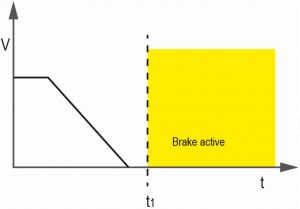
Along with the STO inputs, the S6 safety module terminal strip has dual control inputs for the SBC. The brake is then controlled via the integrated 24V (2A) power supply within the drive.
In order for the output to be active, both inputs must be supplied. The two input channels are realized with a diverse high-side and low-side switch. These two input channels are tested on their switching ability every hour to ensure they are working properly. In addition to the testing of the inputs, the 24V output is short-circuit proof and is actively monitored. If the voltage is outside of 24V±10%, or if the output is not switching properly, the control is disconnected and the drive will enter a fault state.
What are the benefits of SBC?
SBC is an easy and safe way to control a 24 motor brake. Integrated into the S6 drive, it allows for the elimination of a safety relay which would traditionally control the brake. Additionally, because the 24V brake power supply is integrated into the drive, the tradational safe power supply can be replaced. This minimizes components, simplifies wiring, and saves money.
The Safe Torque Off and Safe Brake Control functions integrated into Module 1 of the S6-A drive make it the industry leader for servo applications requiring funcational safety. Contact an Application Engineer at KEB America today to see if the S6-A is the right fit for you.
Let's Work Together
Connect with us today to learn more about our industrial automation solutions—and how to commission them for your application.
